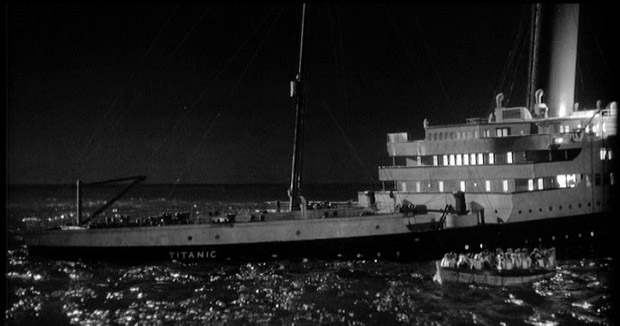James Cameron’s Titanic 3D Release – Trailer
In an attempt to honour, explore and delve into the history of the Titanic and its tragic sinking 100 years ago next Tuesday, documentaries and motion pictures have all taken their own twist on the disaster. From the Nazi propaganda movie Titanic to Roy Ward Baker’s more accurate A Night to Remember, it seems many different countries and cultures are fascinated by Titanic’s traumatic journey. This spring is going to be a busy few months for film and television as we begin to set sail into Titanic fever and ask ourselves why we are so enthralled by this story after 100 years.
It’s hard to imagine just how 2012 can muster up an extensive and refreshing selection of Titanic coverage. But with Julian Fellows’ award-winning series Downton Abbey releasing a four-part drama about it, The National Geographic’s vast array of documentaries and the BBC embarking on a series of one-off specials, it appears they have it covered. However, Hollywood “legend” James Cameron is re-releasing his 1997, multi-award winning movie in 3D to commemorate the launch of ‘the ship of dreams’, and with audience’s soft spot for Kate and Leo, it looks like Titanic will be pulling in the crowds once more almost fifteen years after its first screening. But with a film which was critically panned on its release but loved by its audiences, is Cameron just opening up his disaster epic for another bashing? Or is he confident that contemporary culture still isn’t ready to let go of this story, certain that his epic will inevitably generate another two billion dollars out of our love for the fated cruise liner? I’m betting on the latter.
Many critics slammed Titanic before it had even been screened. With a near $200m production cost and its release constantly postponed, many believed that this was an outrageous sum of money to spend on a single film that was ultimately not delivering what it had promised. But there was something else hanging over the film which didn’t fit. It was a 20th century epic but almost felt like it was riding on the coat-tails of Hollywood’s Golden Age, and filled with a compendium of clichés, many saw it as a crude and tawdry example of what cinema used to be. As a director, Cameron had made a damaging decision which hindered the progression of the movie. He favoured the use of special effects instead of opting for a stronger storyline, which many critics found frustrating and disappointing.
Tobis Productions for UFA’s 1943 film version
Another aspect that saw Cameron’s film destined for failure was its clumsy genre placing. Uninterested in recounting fact, he chose to focus on the fictional love story between upper-class passenger Rose DeWitt Bukater and working-class drifter Jack Dawson, but his reliance on studio SFX drew the film to the status of epic disaster movie, jarring sentimentality with action which left things feeling a little contrived. Structurally, the film wasn’t sound either. Unlike other successful disaster narratives (The Towering Inferno, The Poseidon Adventure) which introduced many characters and subplots that would all unify amidst the ongoing calamity, Cameron focused on just the story of Jack and Rose, sidelining the thousands of other passengers and crew members. It posed the question of why the love story was set on the ship at all, as nothing about the vessel’s factual history was ever developed.
Surprisingly however, the audiences flocked in their millions to see Titanic. Smashing box office records and sweeping up an impressive eleven Oscars, the adoration and support for Cameron’s film blew its critical reception out of the water. But what is it that draws audiences to this film? After all, there are thousands of other films which follow this formula; so why have they never been credited with Titanic’s success? The answer lies in the films ideology. On an accessible level it offers its audience a way to think about relevant social issues of our culture and class system. This is alongside prompting viewers to pose questions about the rich/poor divide, the nature of love and the meaning of sacrifice. The revelation that the highest percentage of people saved were upper-class women highlighted the strict class system onboard the ship, where it appeared lower-class families were not a priority when Titanic was sinking.
Cameron’s movie produces many of the social definitions that original news reports printed just days after the sinking. On April 21st 1912, the Archbishop of Baltimore announced that the answer to the tragedy lay in humanity’s excessive pursuit of luxury and it’s this idea which runs throughout the film. RMS Titanic was the fastest ship of her time, she was a technological revolution and as the largest moving object in the world at that point, the dangers surrounding her were obviously immense. It is reported that her captain didn’t heed the warnings to slow down in icy waters as he wanted to achieve a record-breaking crossing time, a factor which contributed so heavily to the huge death toll. From start to finish, Cameron’s film proclaims to its viewers that intuitive knowledge can surpass rationality, that greed is dangerous and elitism is wrong. But at its heart it is ultimately a story, which above all, highlights the true power and liberation love can bring.
Edinburgh Filmhouse are screening Baker’s A Night to Remember, Sat 14 & Mon 16 Apr
